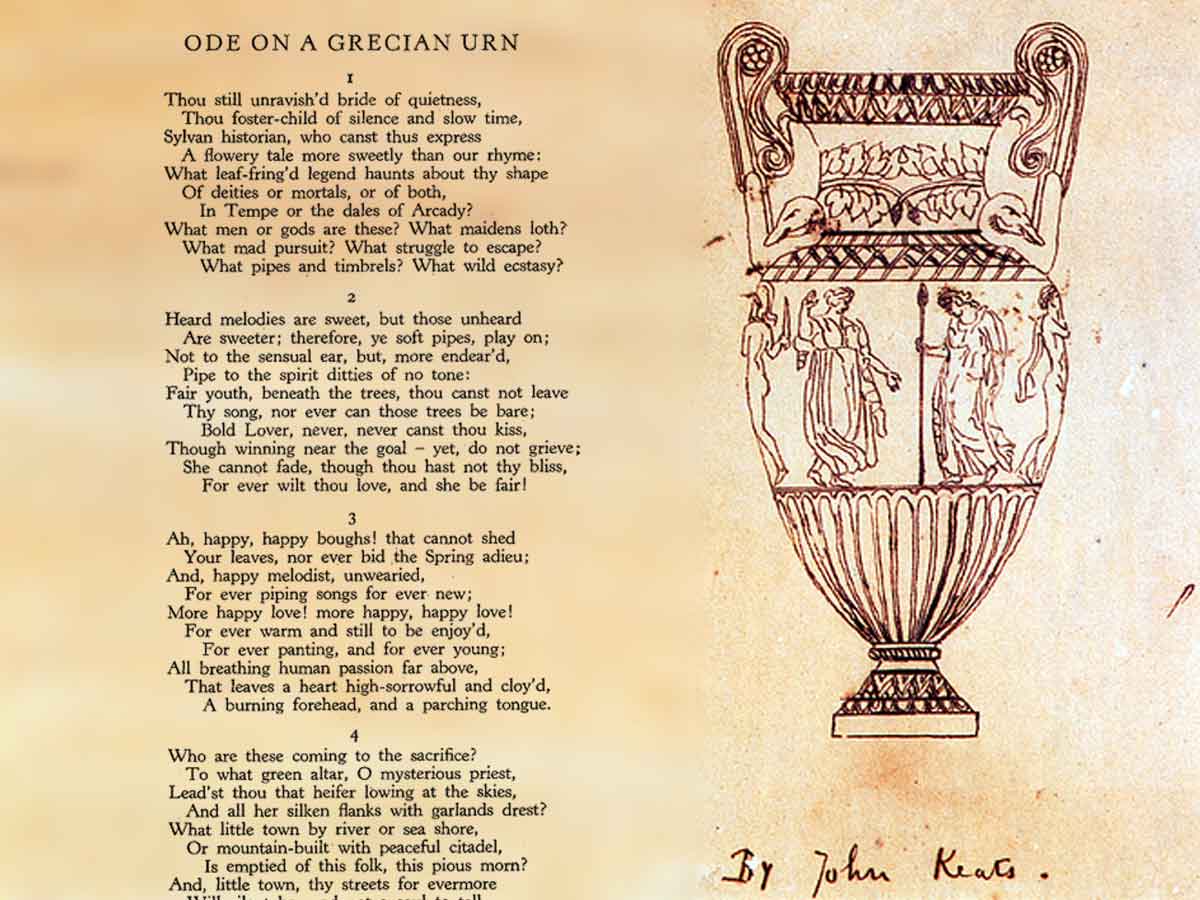
Ode to a Nightingale Masterpiece of John Keats Analysis)
Overview "Ode on a Grecian Urn," written in 1819 by John Keats and published anonymously in Annals of the Fine Arts, is one of the "Great Odes of 1819." The other odes in the sequence include "Ode on Innocence," "Ode on Melancholy," "Ode to a Nightingale," and "Ode to Psyche."
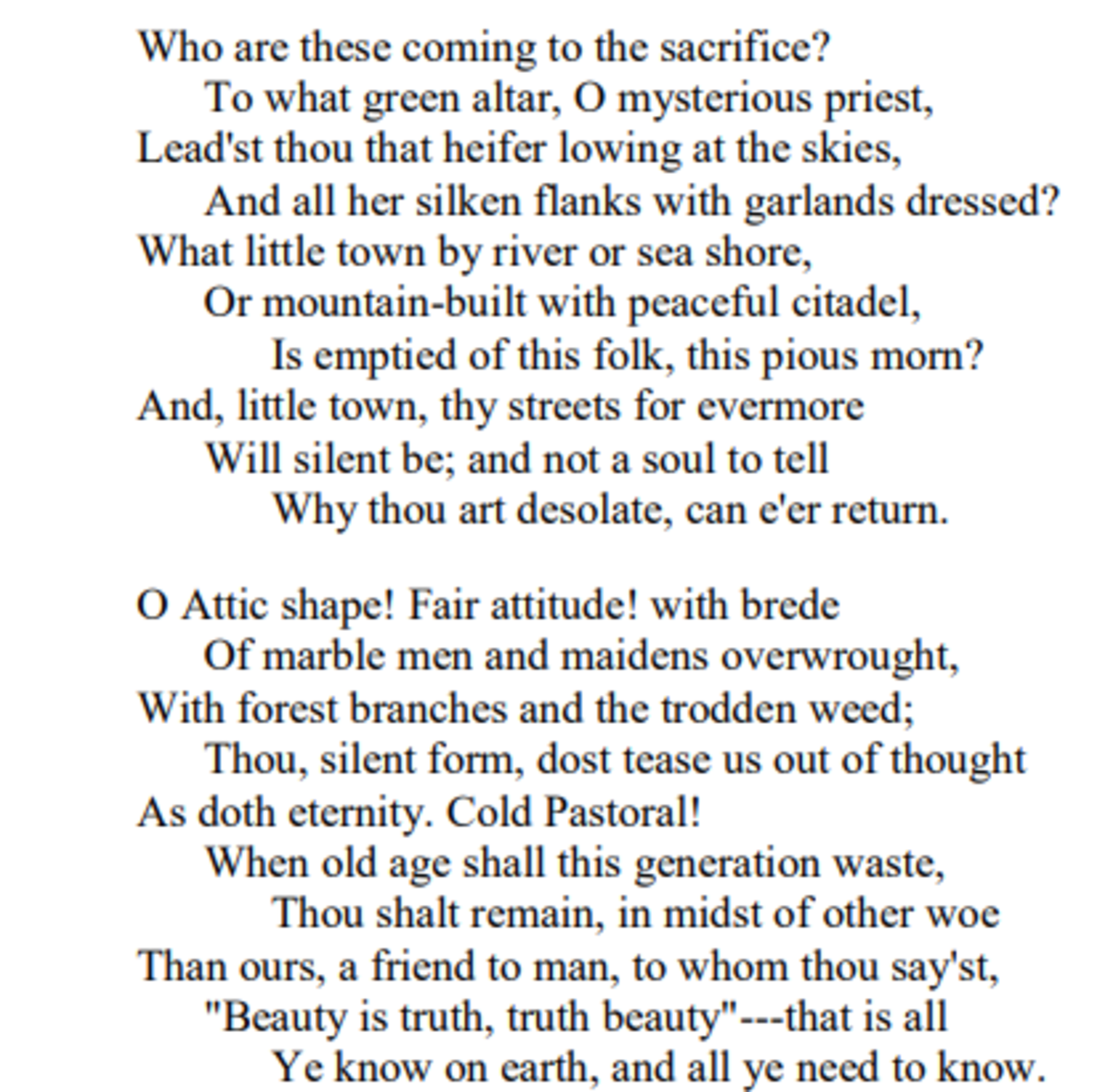
Analysis of the Poem 'Ode On A Grecian Urn' by John Keats Owlcation
Analysis: "Ode on a Grecian Urn". In each stanza, the speaker attempts to engage with the urn. In the first stanza, they approach the urn reverently, as though awestruck by its form. The speaker sees it as pure, comparing it to a "still unravish'd bride of quietness" (Line 1), implying that because of this purity, the urn can tell the.
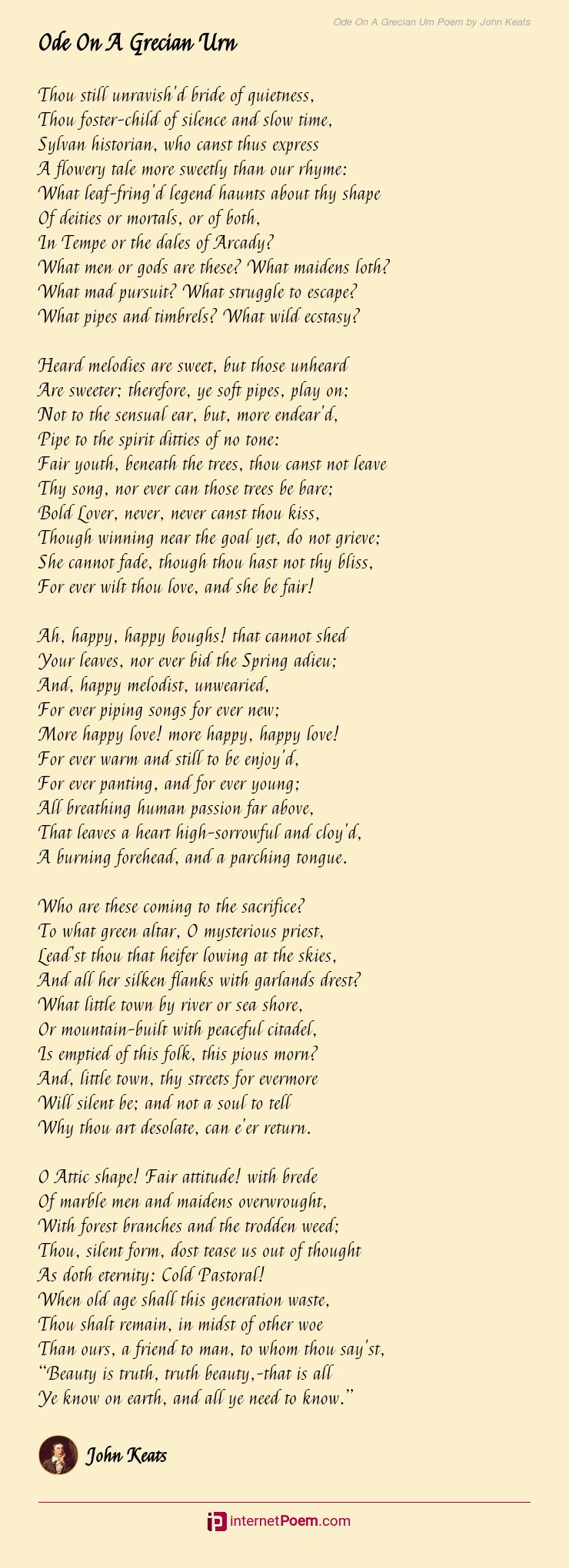
Ode On A Grecian Urn Poem by John Keats
What Is the Theme? The main theme of 'Ode On A Grecian Urn' is the idea that beauty in art is enduring and permanent and therefore true, as opposed to earthly human nature, which is transient and fades with time. 'Ode On A Grecian Urn' Line By Line Analysis of Stanza 1 Lines 1 - 4
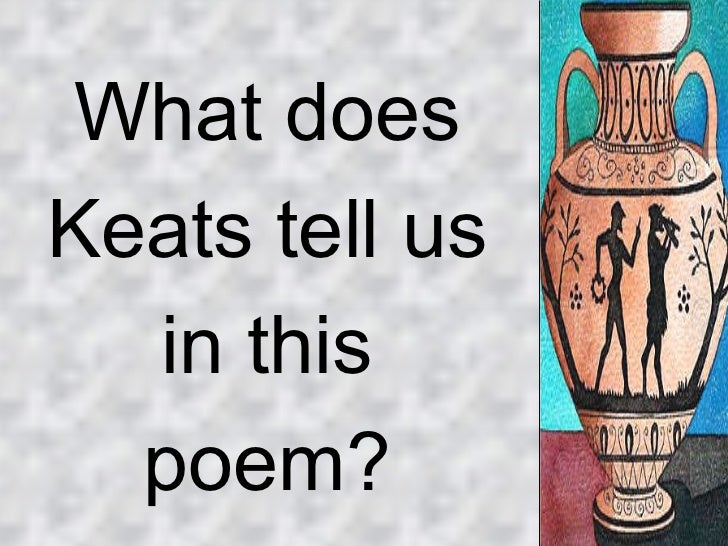
👍 Ode on a grecian urn poem. Ode on a Grecian Urn by John Keats. 20190220
Written in 1819, 'Ode on a Grecian Urn' was the third of the five 'great odes' of 1819, which are generally believed to have been written in the following orde: Psyche. Nightingale. Grecian Urn. Melancholy. Autumn. Of the five, Grecian Urn and Melancholy are merely dated '1819'.

Ode on a Grecian Urn by John Keats Poetry Foundation 11/27/2017 Ode
"Ode on a Grecian Urn" is a poem by John Keats in which the speaker admires an ancient Grecian urn and meditates on the nature of truth and beauty. In the first stanza, the speaker.

POETRY. POEM, Ode on a Grecian Urn by John Keats. 1795 to 1821. Digital
Odes, Iambs and Urns. 'Ode on a Grecian Urn' is one of John Keats' most famous poems. He's a Romantic poet, and he wrote it in 1819 along with a bunch of other odes - he was kind of going through.

(PDF) Stylistic Analysis of a Poem “ODE ON A GRECIAN URN” Written by
More happy love! more happy, happy love! For ever warm and still to be enjoy'd, For ever panting, and for ever young; All breathing human passion far above, That leaves a heart high-sorrowful and cloy'd, A burning forehead, and a parching tongue. Who are these coming to the sacrifice? To what green altar, O mysterious priest,
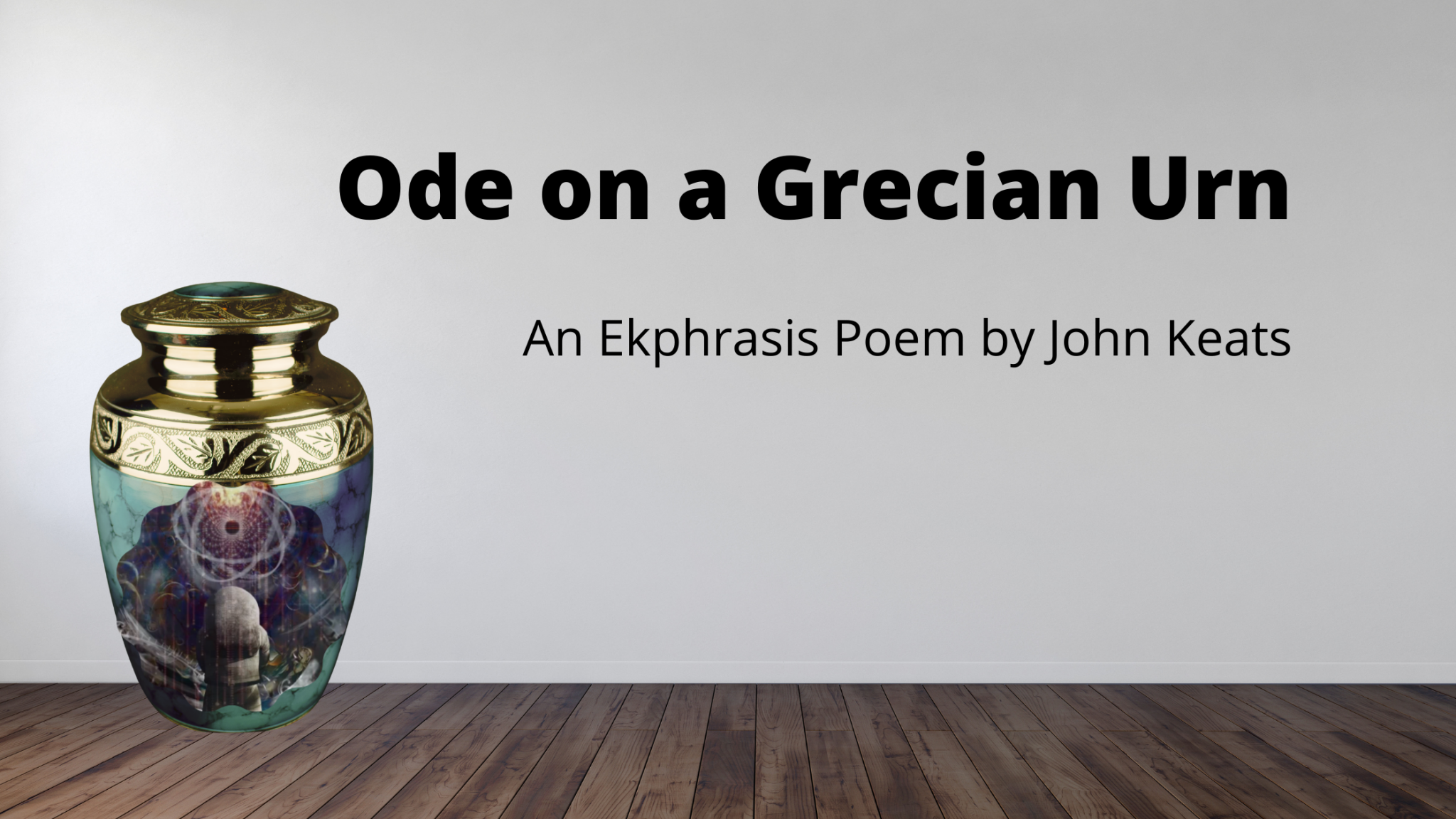
Ode On a Grecian Urn Ekphrasis Poem by John Keats
Summary "Ode on a Grecian Urn" Summary In the first stanza, the speaker stands before an ancient Grecian urn and addresses it. He is preoccupied with its depiction of pictures frozen in time. It is the "still unravish'd bride of quietness," the "foster-child of silence and slow time."

Keats' "Ode On a Grecian Urn" Grecian, Urn, Keats
Analysis: The poem's main topic is the idealized world depicted on a Grecian urn, a realm not subject to the passage of human time. Keats yearns for this world's aesthetic beauty and imperviousness to human strife, and his language mirrors the emotional intensity of the scenes he observes: "What mad pursuit? What struggle to escape?/
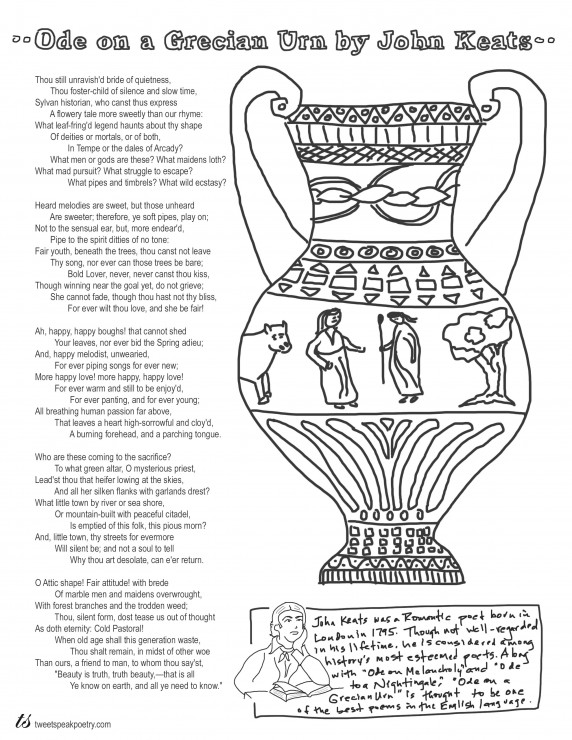
🌷 Ode on a grecian urn literary analysis. Ode On A Grecian Urn Analysis
"Ode on a Grecian Ode" is based on a series of paradoxes and opposites: the discrepancy between the urn with its frozen images and the dynamic life portrayed on the urn, the human and changeable versus the immortal and permanent, participation versus observation, life versus art.

😱 Ode to a greek urn. Summary of Ode on a Grecian Urn by John Keats
Analysis PDF Cite Last Updated October 20, 2023. Throughout "Ode on a Grecian Urn," the speaker experiences a wide range of emotions and feelings regarding the urn's immortalization of the.

Ode on a Grecian Urn Analysis of the Poem Manjari Shukla YouTube
'Ode on a Grecian Urn' is one of the best-known and most widely analysed poems by John Keats (1795-1821); it is also, perhaps, the most famous of his five Odes which he composed in 1819, although ' To Autumn ' gives it a run for its money.

Ode On a Grecian Urn analysis by Caroline Blair YouTube
Though Charles Swinburne called Keats's early work "some of the most vulgar and fulsome doggrel ever whimpered by a vapid and effeminate rhymester in the sickly stage of whelphood," he later wrote that "Ode on a Grecian Urn" was one of the poems "nearest to absolute perfection, to the triumphant achievement and accomplishment of the very utmost beauty possible to human words."

Ode on a Grecian Urn by John Keats _ the Poetry Foundation John Keats
Realities of life are painful and only imitation can console the soul. It has been proved in "Ode on Grecian Urn" that analysis of life makes one's mind critical and tortures it whereas art bestows it peace. The beauty of art has been glorified and the sad realities of life have been degraded in this poem.
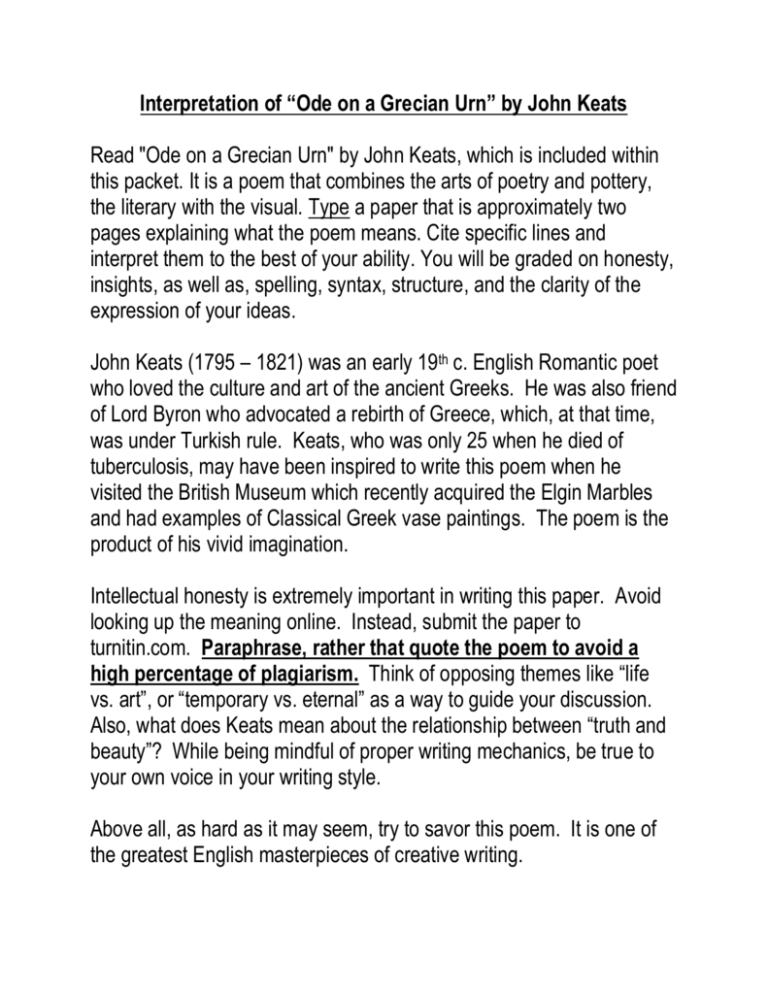
Interpretation of “Ode on a Grecian Urn” by John Keats
Poem Guide John Keats: "Ode on a Grecian Urn" How to read the most famous poem "for ever." By Camille Guthrie Oil on canvas by Joseph Severn (1793-1879), 1821-1823. London, National Portrait Gallery (Photo by DeAgostini/Getty Images) It's hard to be human.

👍 Ode on a grecian urn poem. Ode on a Grecian Urn by John Keats. 20190220
Ode to a Grecian Urn is not just a poem about an ancient urn; it is a meditation on the nature of art itself. It reflects Keats' artistic genesis, grappling with the challenges and possibilities.